Why you can trust Tom's Hardware
Gigabyte EasyTune lets you adjust CPU frequency and voltage levels within Windows, and even has a programmed overclock and an auto-tuning algorithm. Unfortunately for Gigabyte, those “easy” overclocks did not produce stable results in our stress tests.


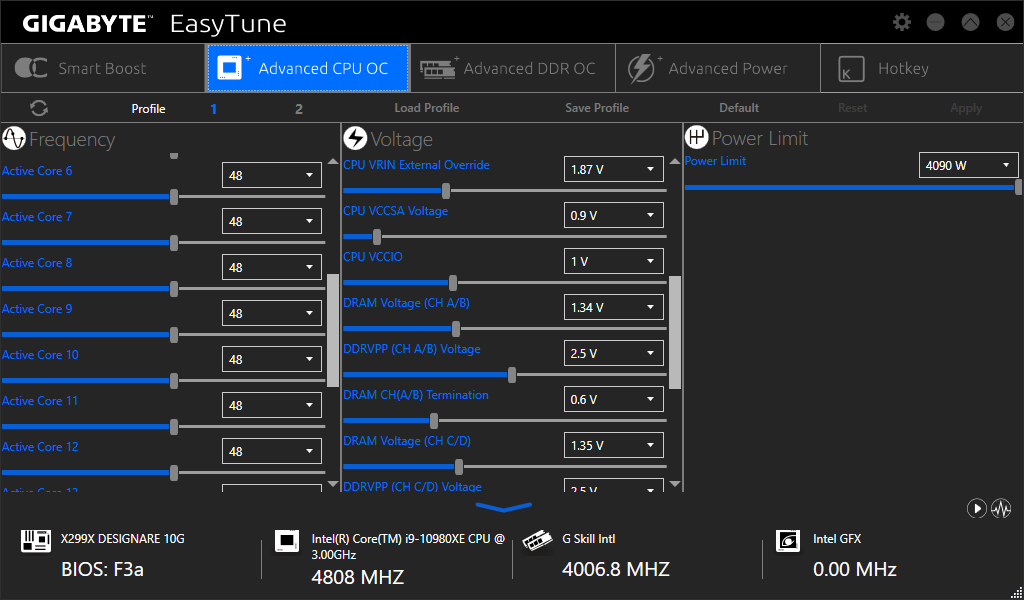
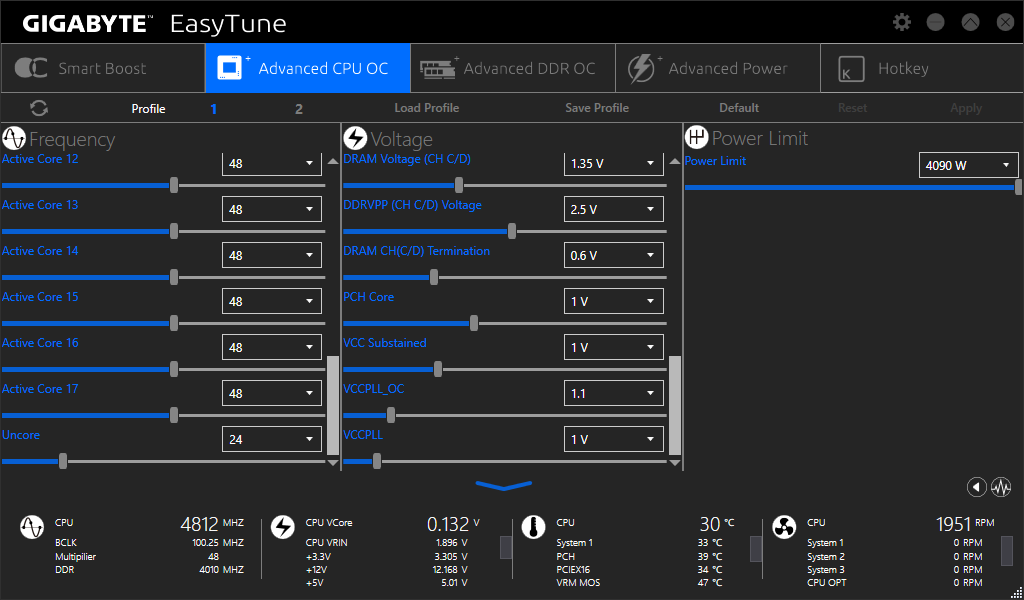
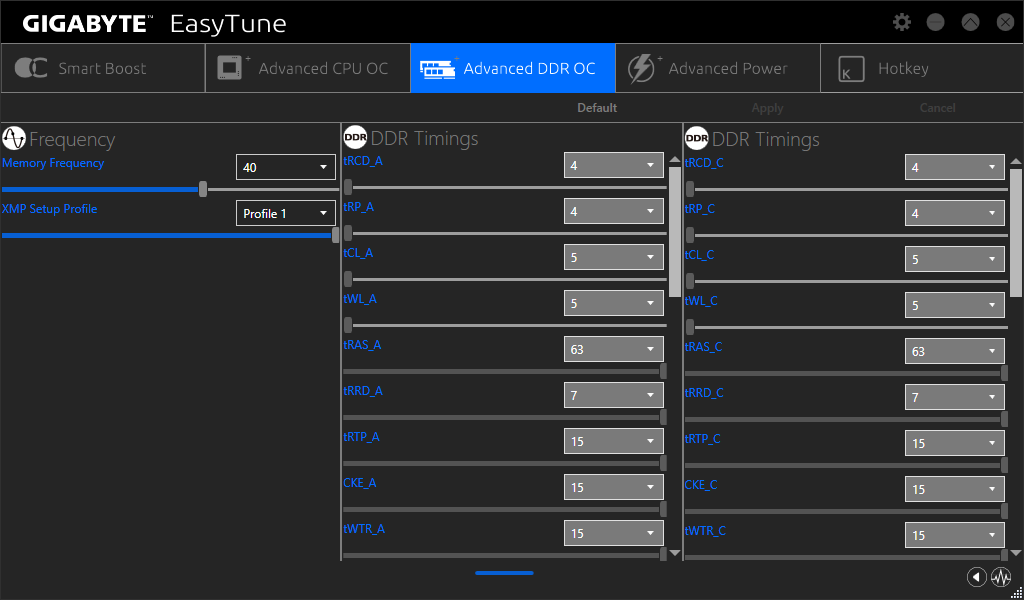
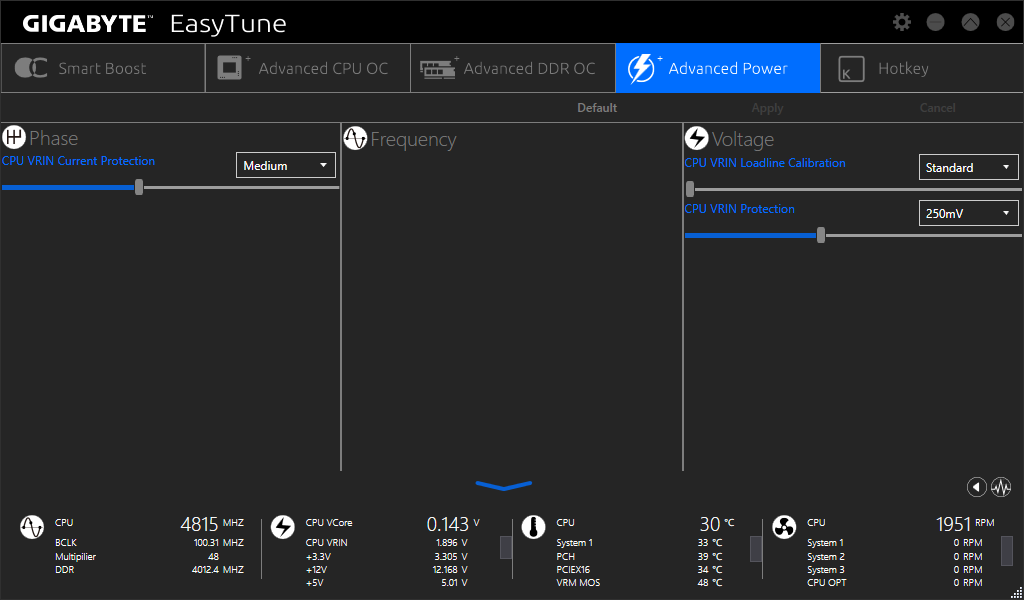

An icon on the lower-right side of the EasyTune interface opens Gigabyte Hardware Monitor, which is an applet from its System Information Viewer (SIV) that displays system stats on the right side of your viewscreen. Clicking Hardware Monitor’s “return” icon opens SIV.
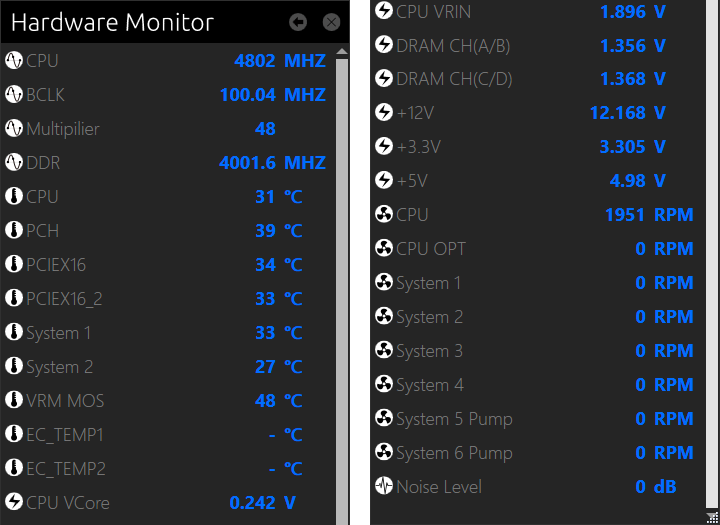
After running a lengthy fan-tuning session upon first launch, Gigabyte SIV becomes a reasonable utility for tracking system stats and changing fan settings. Users can even choose their own monitoring alerts and log system readings, if they’d like.
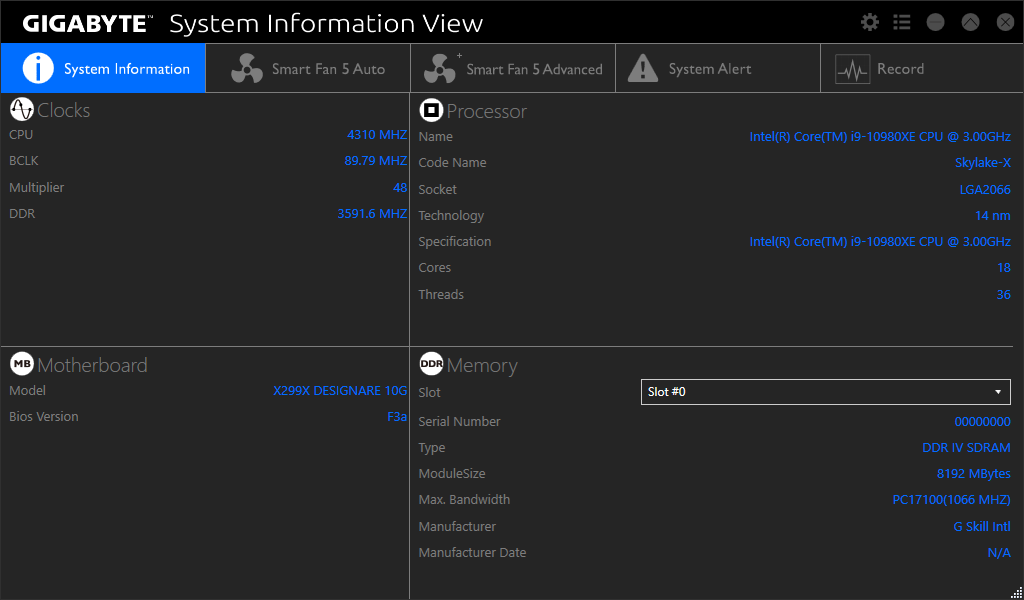



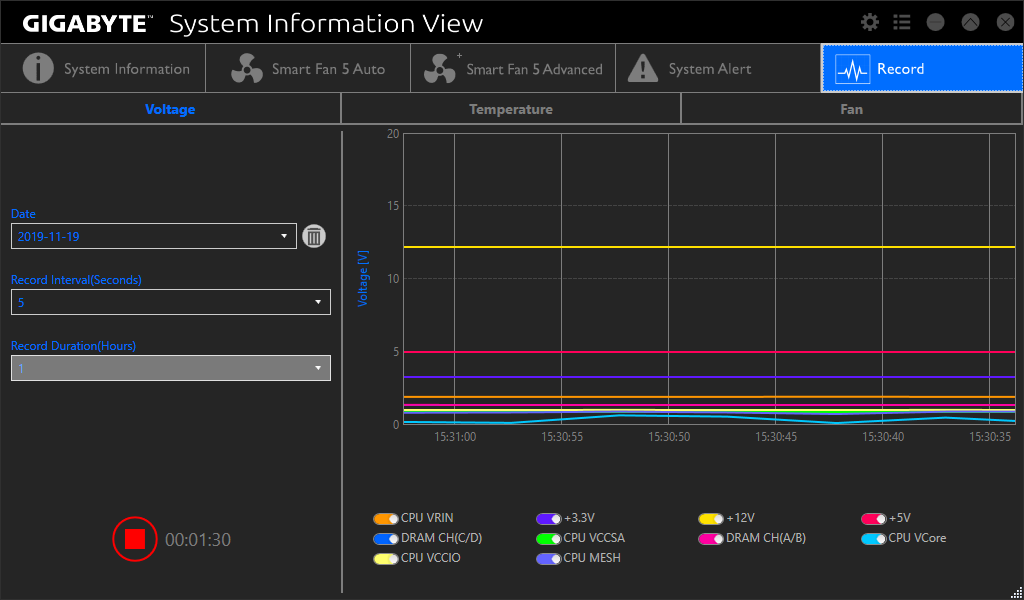
RGB Fusion 2.0 reads the RGB controllers of our memory and graphics card as well as the motherboard. These can set to various pulsating patterns and colors in full synchronicity, but nothing so complicated as a rainbow pattern is available. Furthermore, at least in our test rig, once you close the window, synchronization is lost.
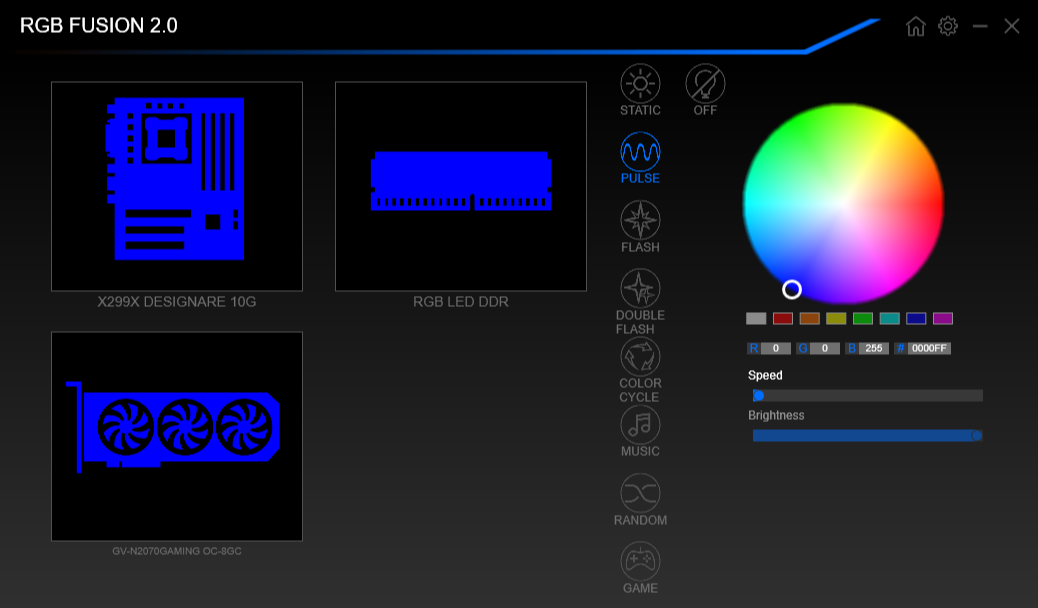
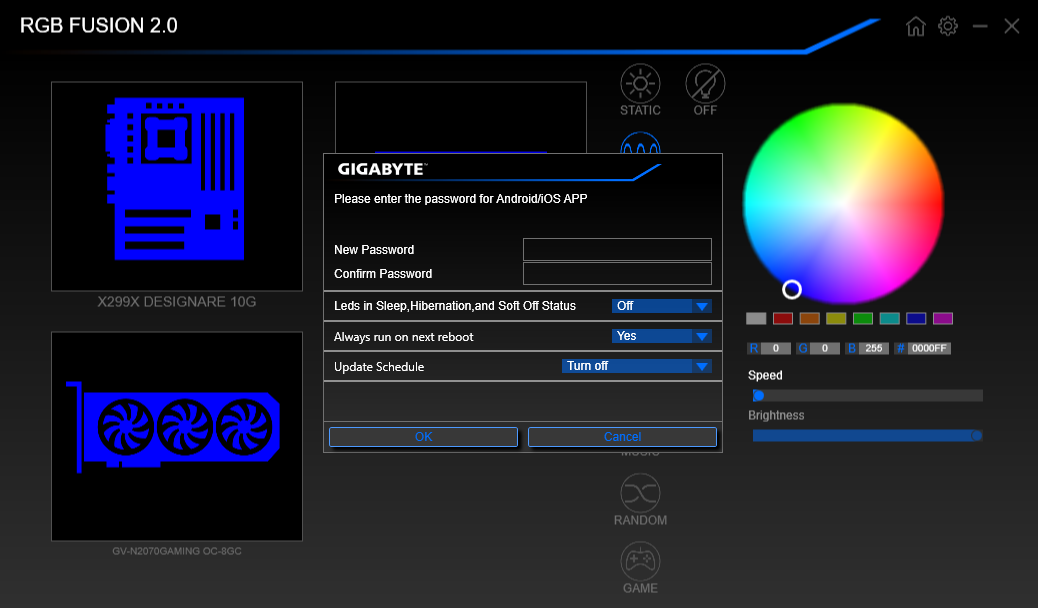
Firmware
X299X Designare 10G firmware opens to an Easy Mode GUI, which limits user interaction primarily to settings that aren’t difficult to recover from. Anyone who really wants to push their hardware must first gather the courage to press the “F2” key at the top of their keyboard.

Once inside Advanced Mode, users can play within the Tweaker menu to their overclocking heart’s delight. Thermal issues prevented us from using more than 1.25V CPU core with our Core i9-10980XE on any motherboard, and we found that the roughly +5v bias on the board’s front bank of memory was roughly +15mV on the rear.
Get Tom's Hardware's best news and in-depth reviews, straight to your inbox.

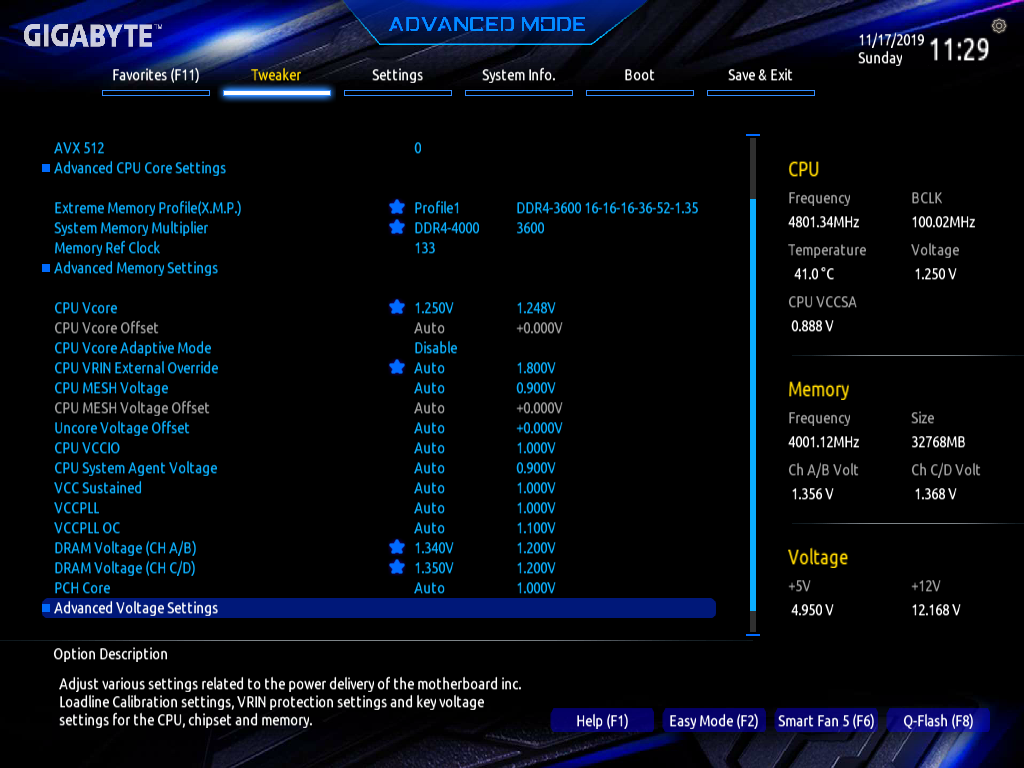
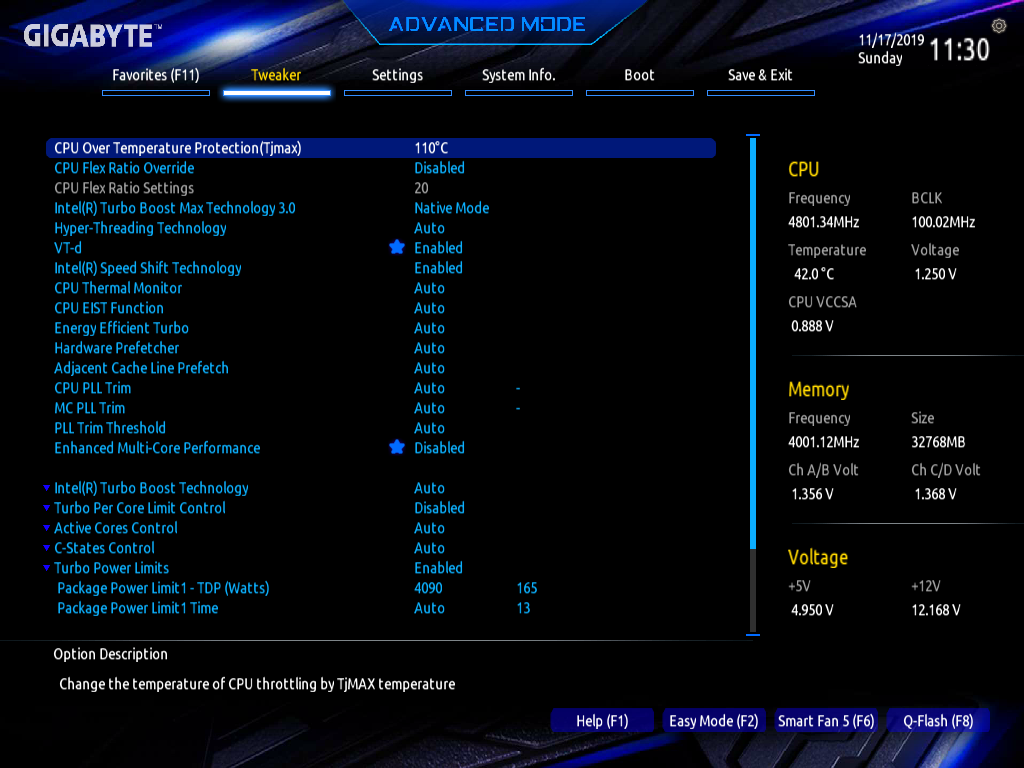
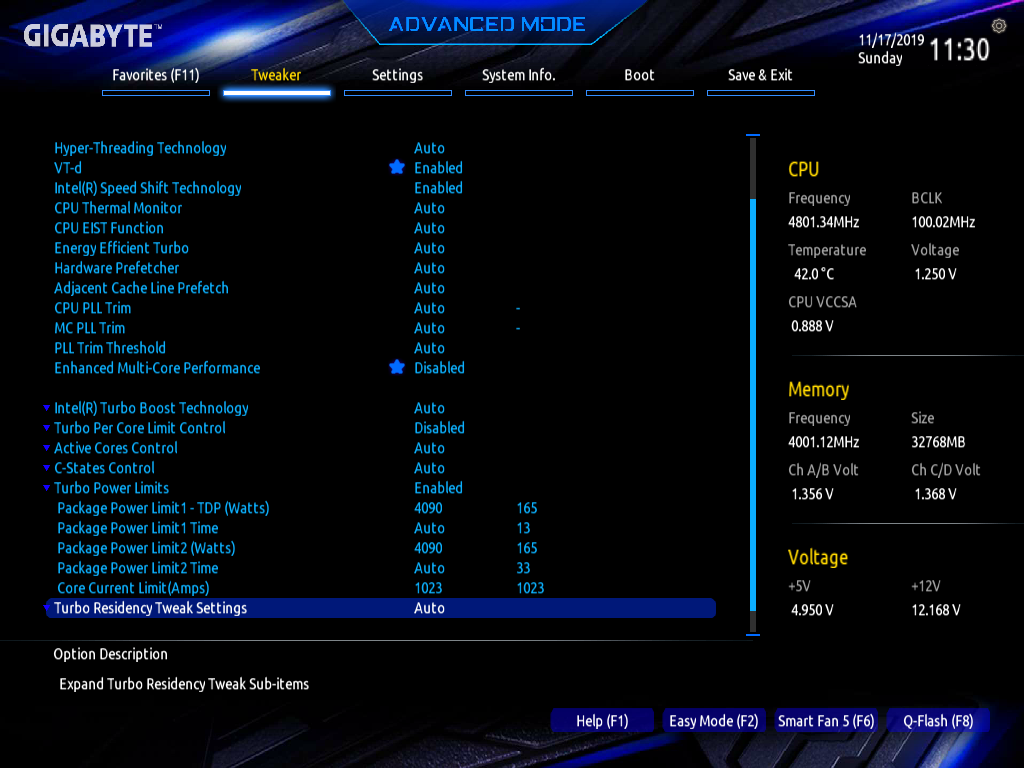
Speaking of memory, the X299X Designare 10G offers users a peak at module programming, along with a comprehensive set of primary, secondary, and tertiary latency controls.
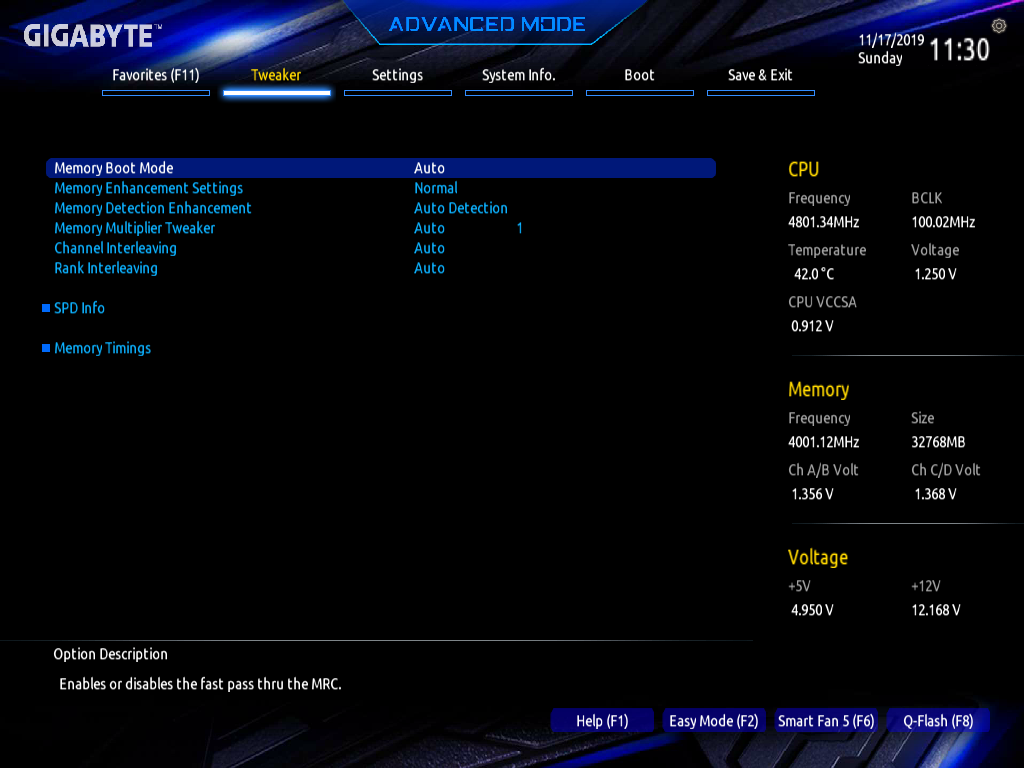
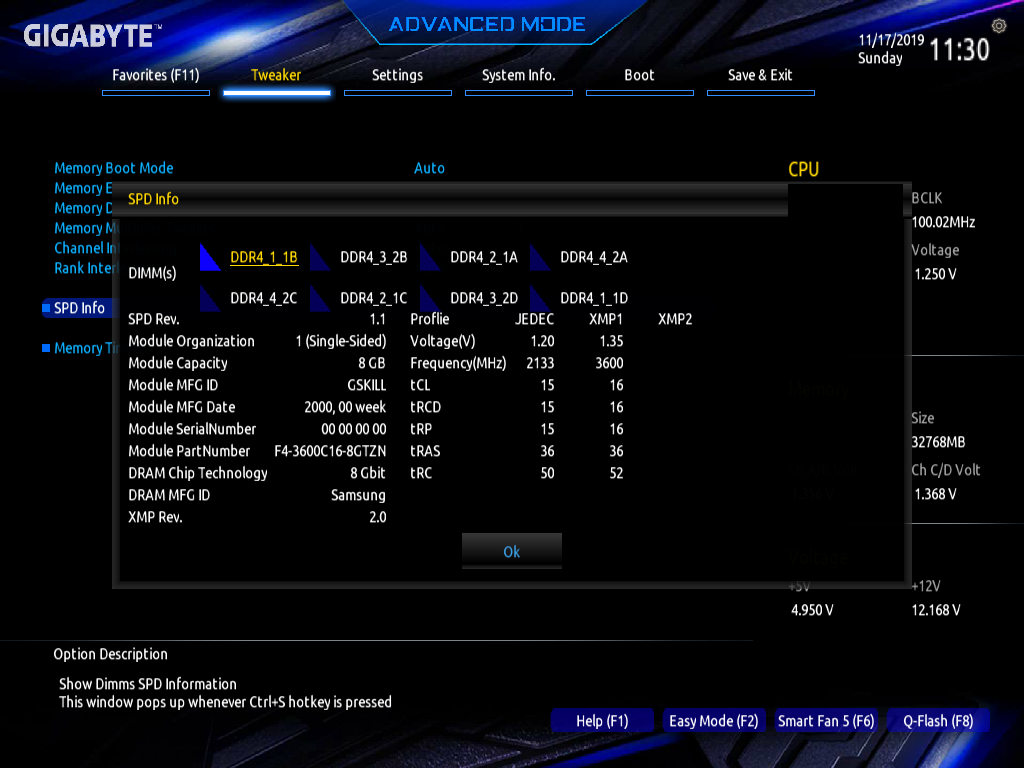
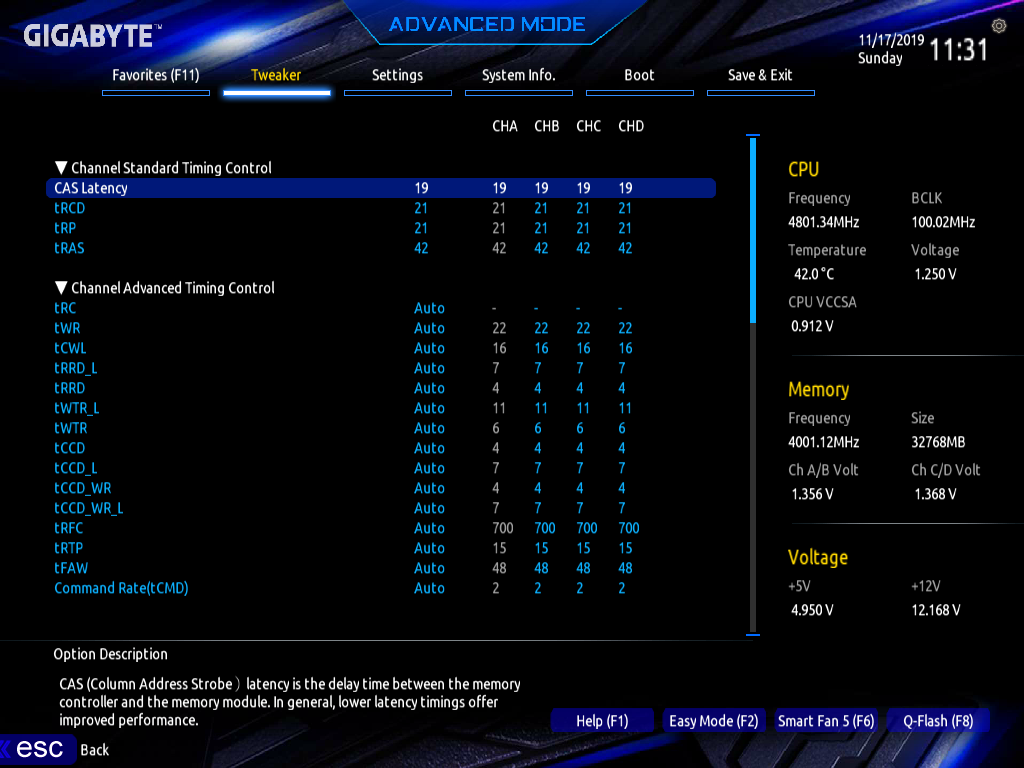
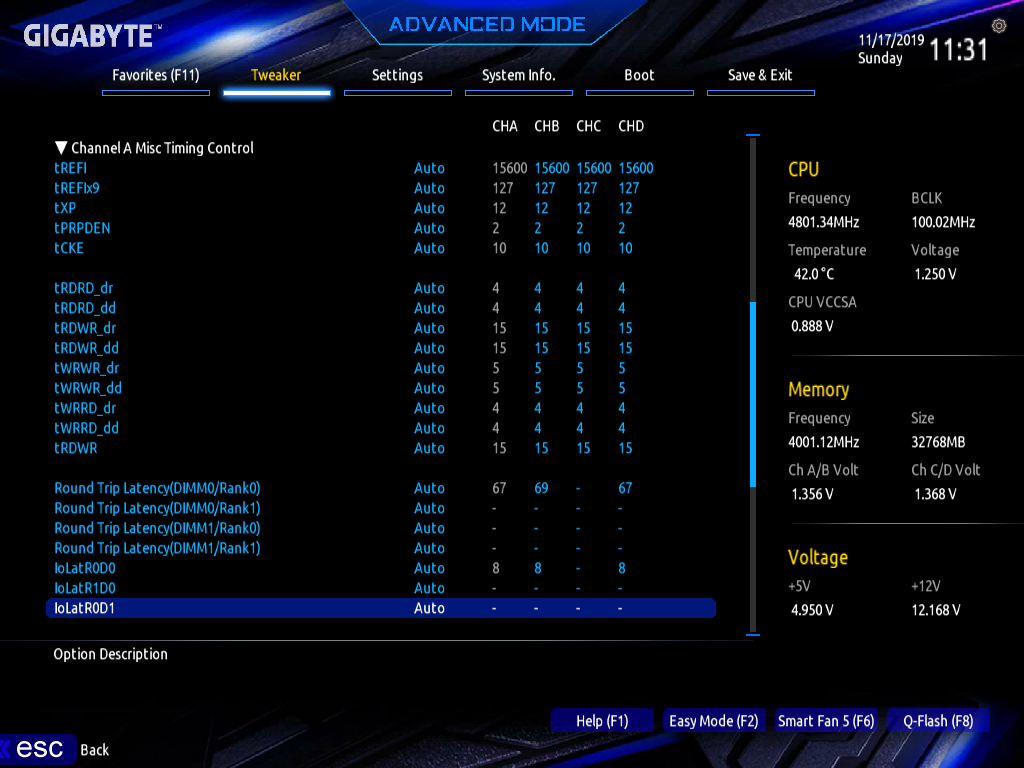
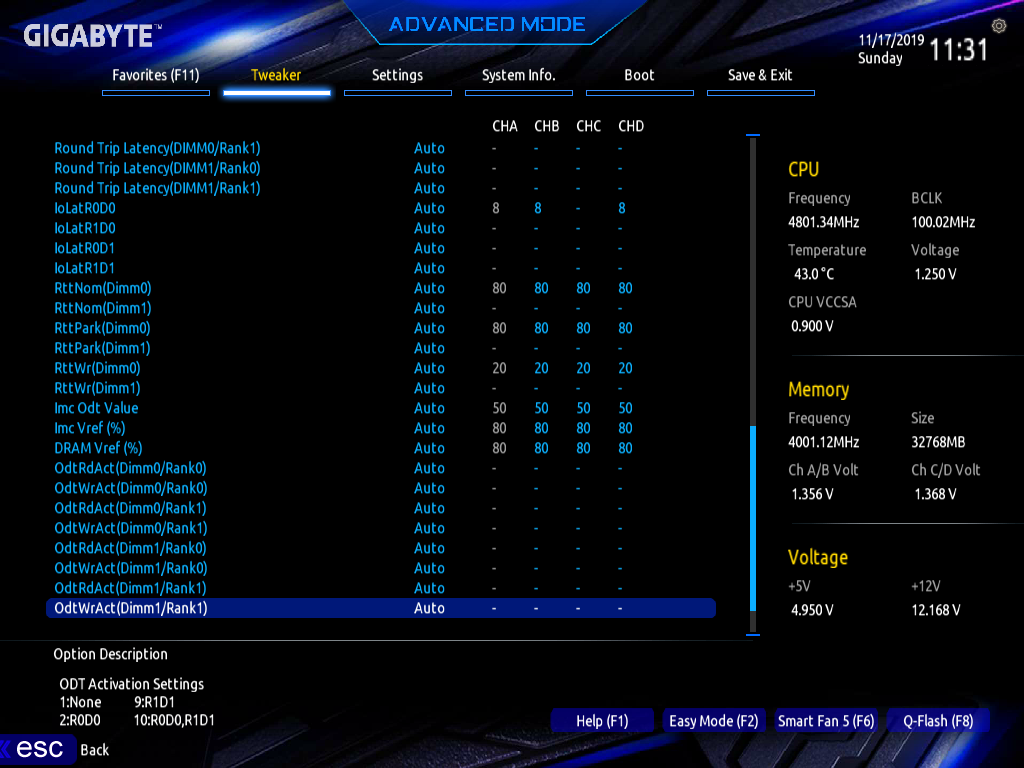
We found “Auto” to be the best “VRIN Loadline Calibration” setting to keep our CPU near our 1.25V setting during changing software loads.
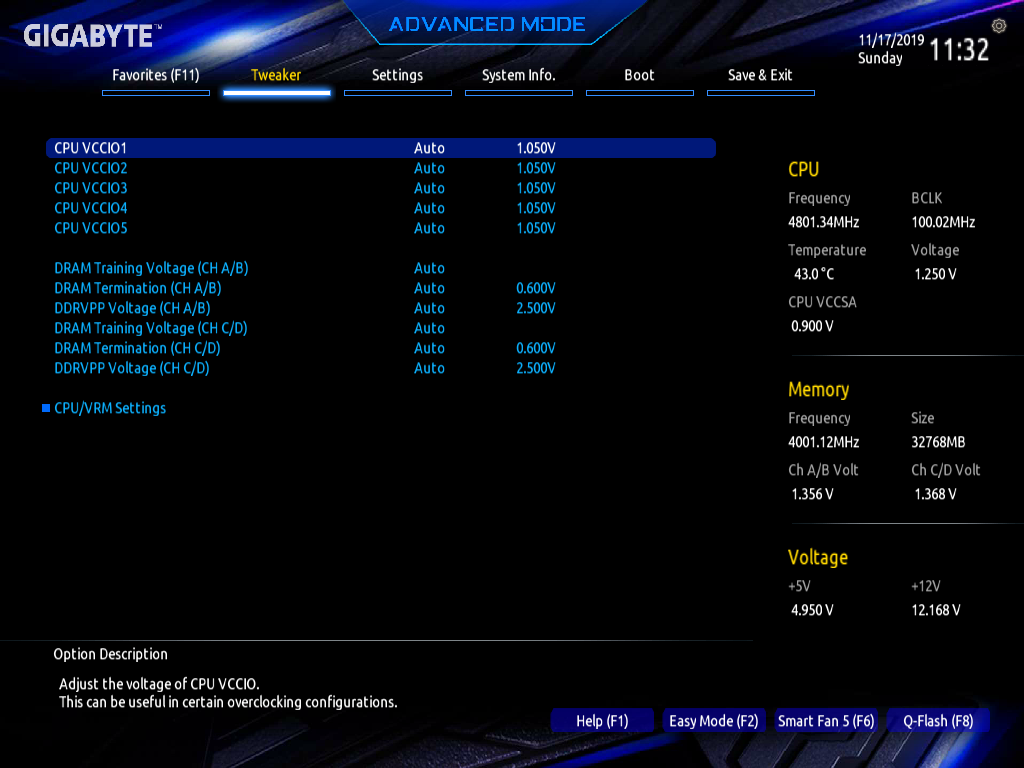

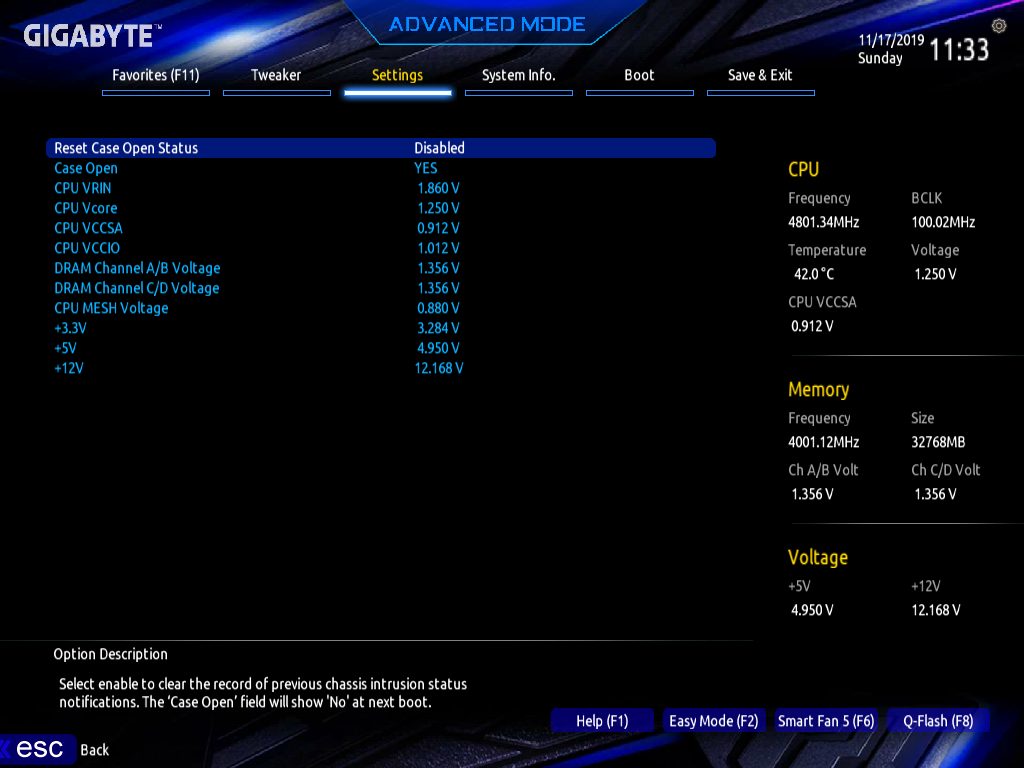
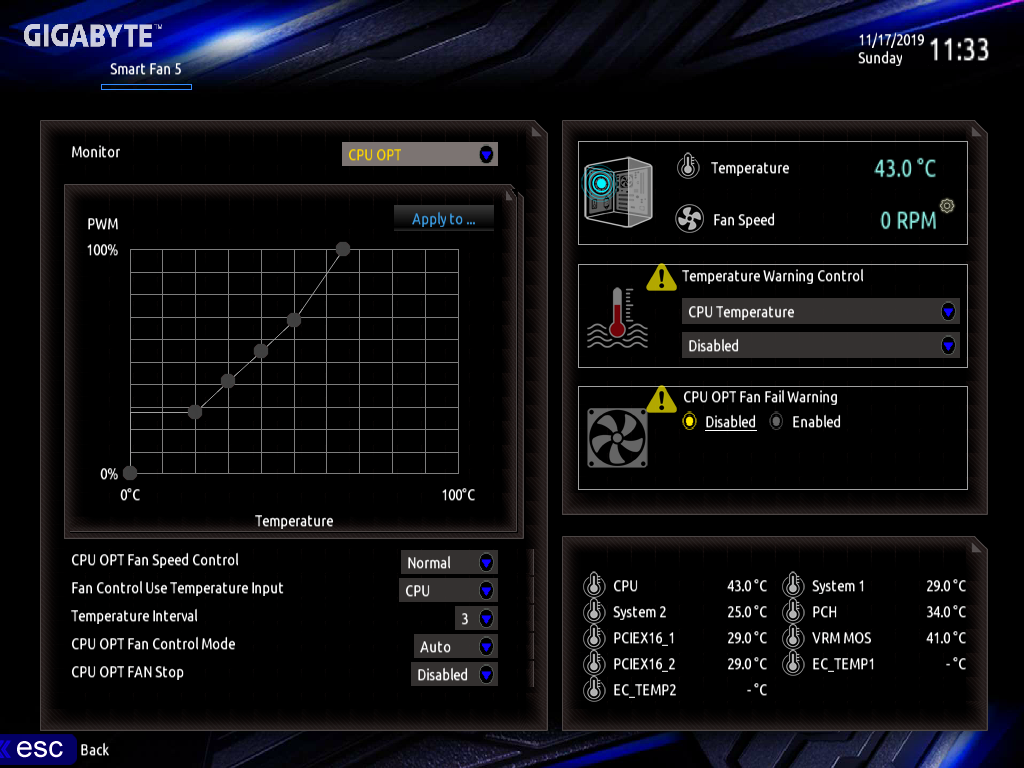
Fan settings can be changed at any time using Gigabyte’s Smart Fan 5, by pressing the keyboard’s “F6” key. Other quick access settings include firmware programing via the “F8” key.
| Frequency and Voltage settings | Gigabyte X299X Designare 10G | ASRock X299 Taichi CLX |
|---|---|---|
| BIOS | F3a (10/21/2019) | P1.20 (10/07/2019) |
| Base Clock | 80-500 MHz (10kHz) | 90-2000 MHz (50 kHz) |
| CPU Multiplier | 7-80x (1x) | 7-80x (1x) |
| DRAM Data Rates | 800-5000 (200/266.6MHz), 5266/5533/5800 | 800-4400 MHz (200 / 266.6 MHz) |
| CPU Vcore | 0.90-1.70V (1 mV) | 0.90-1.55V (6.25 mV) |
| System Agent | 0.85-1.40V (5 mV) | 0.80-2.00V (5 mV) |
| CPU I/O | 0.80-1.40V (5 mV) | 0.90-1.50V (10 mV) |
| PCH Voltage | 0.80-1.30V (20 mV) | 0.95-1.35V (25 mV) |
| DRAM Voltage | 1.00-2.00 mV (10 mV) | 1.10-2.40 mV (6 mV) |
| CAS Latency | 5-31 Cycles | 1-31 Cycles |
| tRCD | 1-31 Cycles | 1-31 Cycles |
| tRP | 1-31 Cycles | 1-31 Cycles |
| tRAS | 1-63 Cycles | 1-63 Cycles |
Gigabyte’s X299X Designare 10G takes on ASRock’s X299 Taichi CLX using a custom Alphacool liquid cooling configuration based upon its Eisblock XPX water block, Eisbecher D5 reservoir with included pump, and NexXxoS UT60 X-flow radiator.
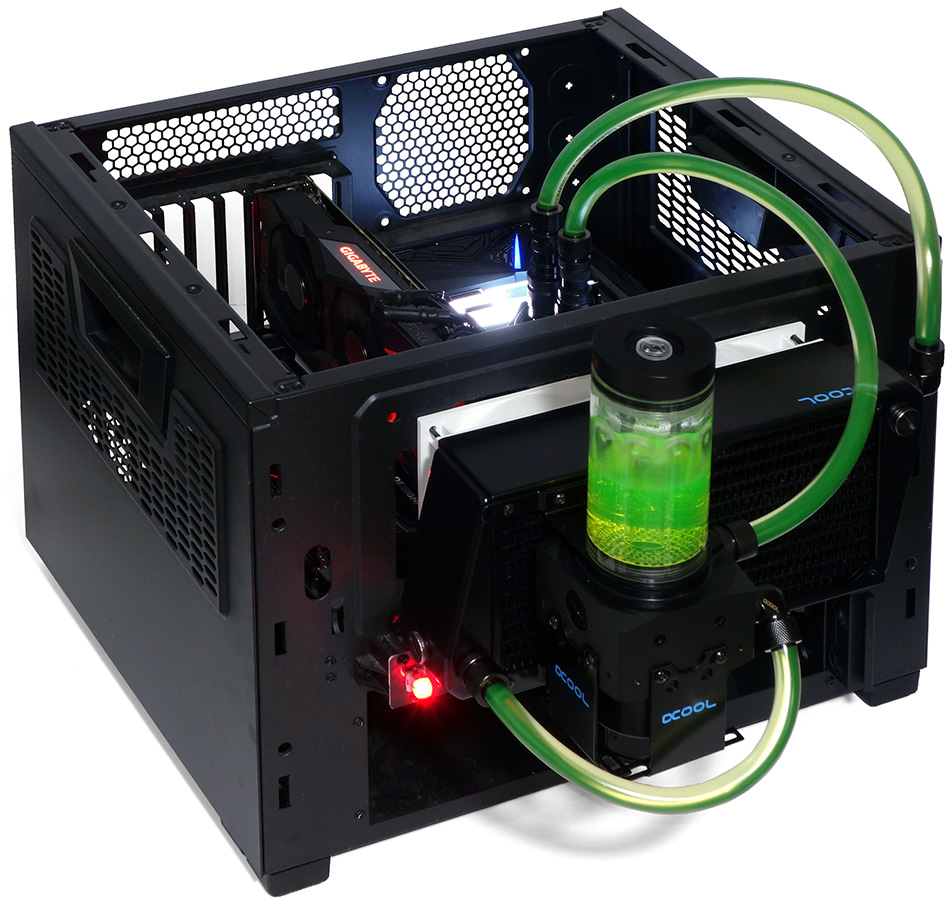
Remaining components include Gigabyte’s GeForce RTX 2070 Gaming OC 8G, Toshiba’s OCZ RD400, and G.Skill’s Trident-Z DDR4-3600 from our Ryzen 3000 memory evaluation.
Overclocking
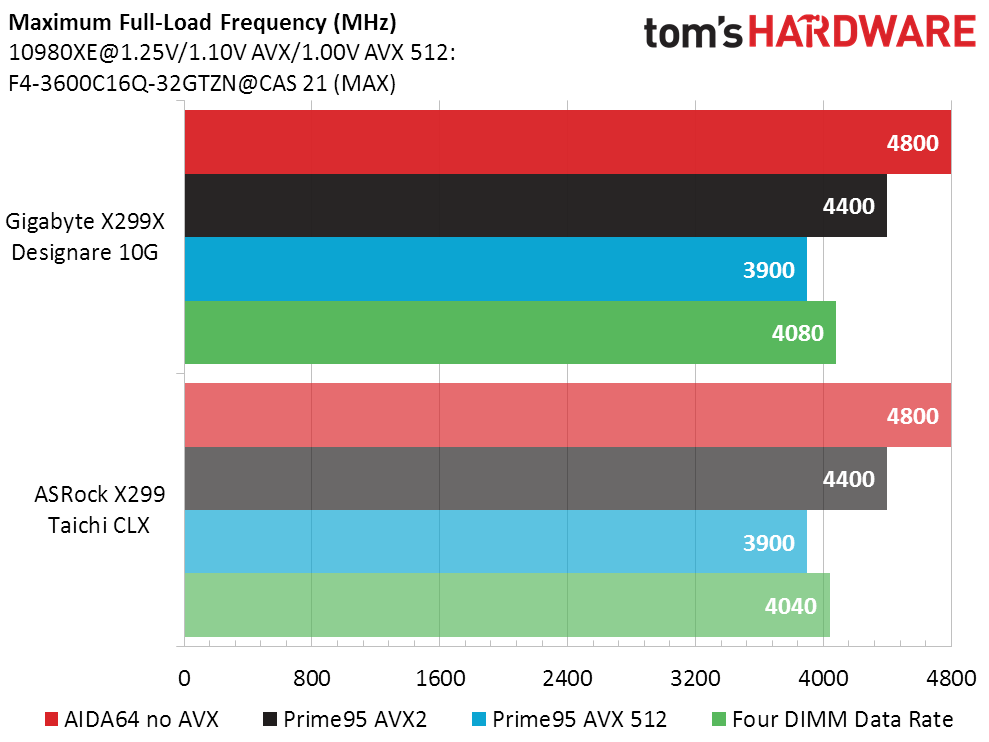
The only things really worth mentioning in our frequency chart is that AIDA64 presents so light a load that it allowed us to run 1.25V and reach 4.80GHz on all cores, while the heavier load of Prime95 forced us to drop our CPU to 1.00V just to keep heat in check. Both boards reached the same CPU frequencies, though the X299X Designare 10G edged out the X299 Taichi CLX in memory data rate.

Bandwidth is more important than data rate, and the X299 Taichi CLX’s lower overclock outpaced the higher clock from the X299X Designare 10G. Differences like this are typically caused by firmware attempting to compensate for the higher frequencies by using looser advanced timings, in a configuration where we’re only using fixed primary timings.
MORE: Best Motherboards
MORE: How To Choose A Motherboard
MORE: All Motherboard Content
Current page: Software, Firmware and Overclocking
Prev Page Features and Specifications Next Page Benchmark Results And Final Analysis-
Crashman FYI, original title "Twice IS Nice" referred to doubled features. But it looked odd.Reply
Yeh, this is going to be more of a storage than a graphics issue for the foreseeable future.svan71 said:how many pcie M.2 4.0 ? oh ZERO ! -
trashpandacoder "Excessive PCIe, M.2 & SATA sharing"Reply
As with the Taichi..."Dealt by Intel pairs of duces and threes, ASRock is hoping for a full house". So we pay as much as a TRX40, but without PCIE 4.0 and hobbled M.2?
Aorus TRX40 for $500. Too little too late Intel. I am going Team Red for my next builds for the foreseeable future. -
g-unit1111 Looks like a nice board and my Z170 Designare is still holding up very nicely. But is it worth investing in X299 when AMD is becoming more increasingly dominant in this area? Especially with the new TR4-3000 series?Reply -
Crashman Reply
Great point, and far better than "But I can get a TRX40 board with fewer than half the features for a little less money". We'll see how much a TRX40 board with these features costs: I'm thinking $700 or so in USA.g-unit1111 said:Looks like a nice board and my Z170 Designare is still holding up very nicely. But is it worth investing in X299 when AMD is becoming more increasingly dominant in this area? Especially with the new TR4-3000 series?
On the other hand the 10980XE does have a niche: People who need a lot of PCIe lanes won't want the X570 platform, so they're not getting AM4 processors, and the 10980XE is cheaper than the 3960X. -
chaz_music I've harped on this before, but there is no reason to not have ECC as standard, but especially at these prices. I know it does not matter to most gamers and overclockers, but many well meaning PC users do not know that their data is at risk. Google has shown that ECC hits happen during high solar flare events.Reply
Intel has been fleecing people for years on data safety, and now DRAM is almost the only data path that does not have some protection on Intel desktops. AMD has ECC on their Pro CPUs, and they have had ECC on the desktop for a LONG time.
PCIe has parity checking, and even SSDs have RAID and wear leveling. With ECC being long in the tooth, the new serial based memory interface should consider this as defacto. I am not buying any processors anymore without some kind of memory error correction. Once this becomes standard, the price difference goes away, just like with SSDs. -
mac_angel I think I posted 5 or 6 years ago that I really wish 10G Ethernet would make it's way into the consumer market already. 1Gbs has been maxed out for a LONG time, just with regular SATA 3 HDD, let alone SATA 3 SSDs. And we've had m.2 for several years now. It's frustrating that NAS are becoming common for regular home use, and have pretty good Read/Write even on the cheap ones, but it's still limited by 1Gbs for transferring to and fromReply
